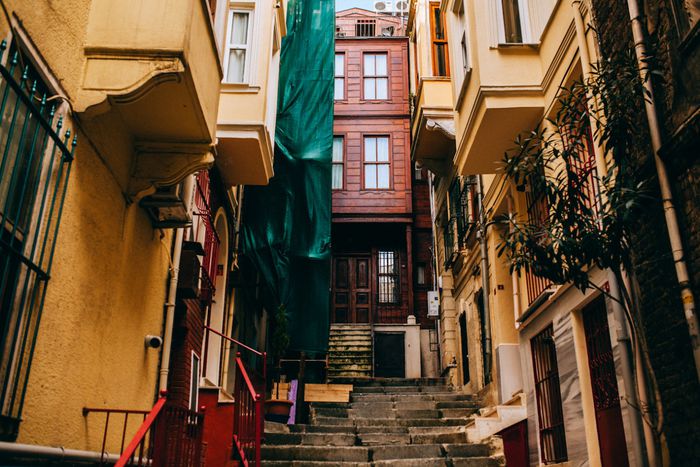
Meet my Hood: Cihangir
Published on
Cihangir, located in the Beyoğlu district of Istanbul between the famous Taksim Square and Kabataş shore, is my current place of residence. It also happens –perhaps not coincidentally– to be one of my favorite neighborhoods in Istanbul. In this article I introduce my hood to you.
Home of the Bohemian Bourgeosie
Since the seventies, Cihangir is regarded as the stomping ground for artists and intellectuals. The district is home to many writers, painters, actors, intellectuals and wealthy expats. The central location of the district, the historical buildings and the magnificent panoramic views are probably what attracted the bohemian bourgeoisie. The streets are narrow, the buildings old and classic and shrouded with greenery. Cozy cafés serve freshly homebrewed coffee, sometimes organic (quite something here in Turkey!) An overwhelming amount of art galleries, vintage clothing boutiques and antique stores filled with treasures dating from Ottoman times, are to be found in the streets of Cihangir. The neighborhood breathes creativity. Actors and actresses can be spotted reading scripts at Cihangir’s packed sidewalk patios every afternoon. Later in the day, in bars that softly play jazz music, you can hear locals discussing cinema, literature and philosophy over a glass of wine. Overall the area is calm, a stark contrast to the nearby located madness of Istiklal Caddesi. I can confidently say that this area is definitely one of the prettiest parts of the city. Also, The Guardian ranked Cihangir as one of the best places to live on earth, among Mauii in Hawaii and Tenerife in Spain.
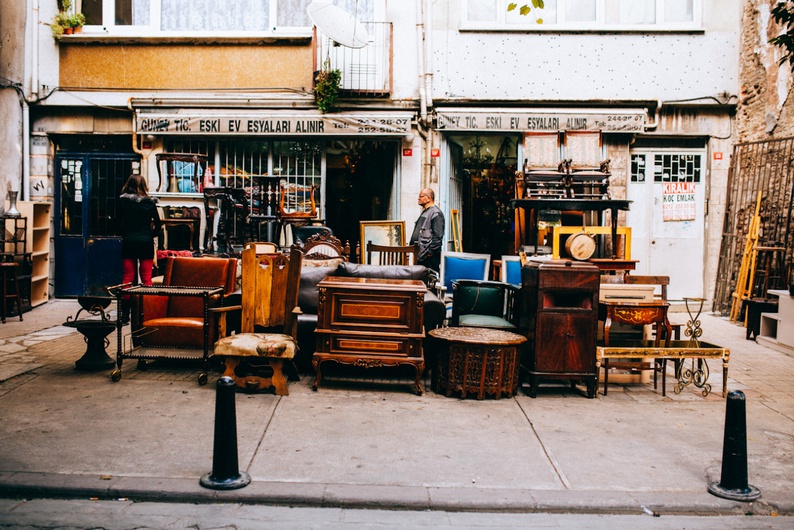
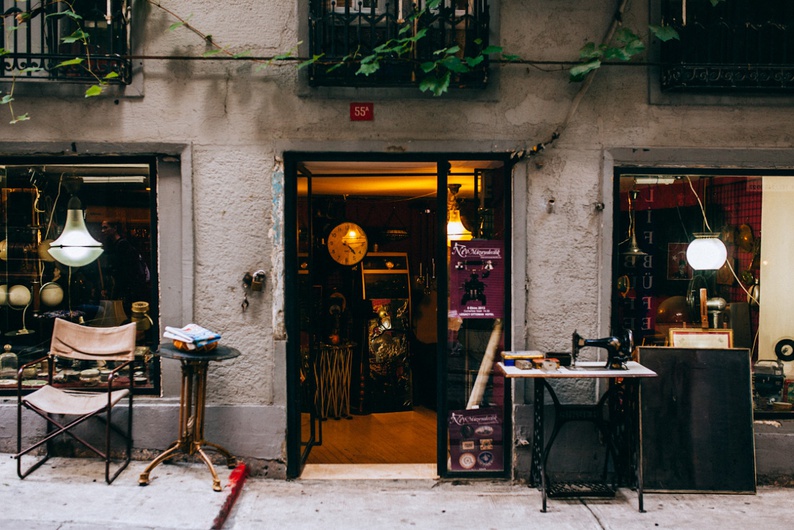
A Scenic Area with a Rich History
Cihangir means 'conqueror' in Turkish and refers to the son of Sultan Suleiman the Magnificent, whose name was -surprise surprise- Cihangir. The district is named after its first building in the area. Sultan Suleiman the Magnificent asked an architect to construct a mosque in memory of his son who had died at an early age. The Cihangir mosque has watched the southern side of the Bosphorus for hundreds of years and has an impressive view of the Golden Horn, the old Peninsula and the Asian coast. The old wooden houses in Cihangir have all been destroyed by fire and the transition to modern architecture took place between the end of the 19th and beginning of the 20th century. The Greeks, Armenians, Jews and Levantines who settled in the area in the 19th century significantly influenced the design and construction of the modern buildings. Most of the minorities living in Cihangir generally belonged to the upper socioeconomic classes of Istanbul. This diverse, cosmopolitan population was disrupted by the political and social upheavals in Turkey during the first quarter of the 20th century. The Greeks who made up the majority population of this ethnic group living in Cihangir left the area during these years. But the avenues and streets of the area retain the memories of the different languages and cultures that have lived here. These memories live on in the people and shops which are still present in Cihangir today. People that have lived here for many years admit that Cihangir has changed. Locals that grew up in the neighborhood say it is now less aristocratic. Finding an apartment used to be really hard, even if you had an unlimited budget to spend. Right now, even I –categorized as poor student- managed to find a room for a reasonable price in this fancy area. (Although I consider the finding of my current room as a small stroke of luck).
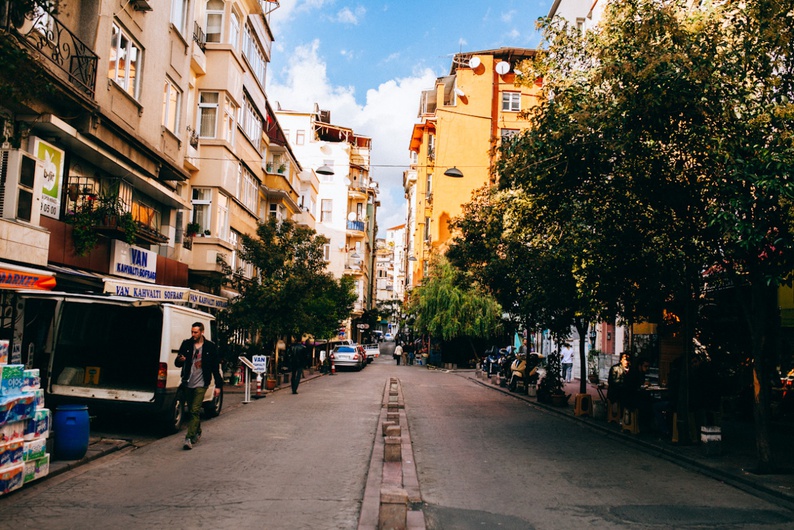 Rhapsody Cihangir
Rhapsody Cihangir
The decrease in ‘aristocracy’ might have to do with the advent of sub-culture groups in the seventies and eighties. Transvestites, sex workers and gay clubs settled here. Even though majority of the clubs were forced to leave again after increased value of real estate in the nineties, it has given the neighborhood a more progressive feeling. People are more free here compared to other districts in Istanbul. In my street I see trannies walking their dogs, who greet the conservative antique store owners. Despite all its changes throughout the years, Cihangir remains an unusual place, which protects the culture of its neighborhood. The original aristocratic residents peacefully coexist with newly arrived creative and progressive minds, artists and expats.
Cat Heaven
Another well-known characteristic of the Cihangir is the relationship between its human inhabitants and its pets, whether pets or stray animals. The area is mostly famous because of its cats. They are everywhere! Many cats are being fed outside, sometimes in addition to being fed at home. Cihangir inhabitants put out food for the animals in front of their gates. Although municipality has put out specific places for cats to be fed, this practice continues. A Turkish saying goes ‘if people cannot feed their cats, take them to the streets of Cihangir, where at least someone will feed and care for them.’
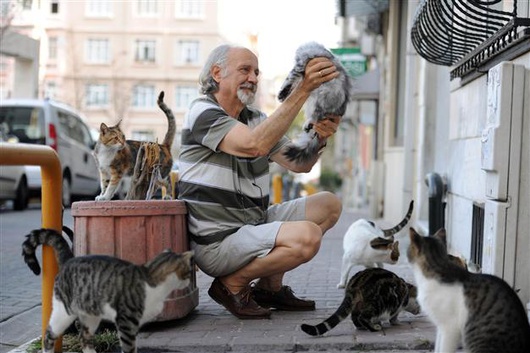 Insiders' Tips
Insiders' Tips
Lastly, I guess it is important to give some tips as to which places to visit! For food, as you are walking along Sıraselviler Caddesi, you will come across many great options. If you’re in the mood for breakfast or brunch, lots of cafés serve these all day to accommodate their artist and expat community which sometimes don’t make it out of bed before 15.00. My favourite place for breakfast is Van Kahvaltı Evi. It is one of the most popular breakfast places in the city, not just Cihangir.
For shopping, do not go to Cihangir for things you can buy on Istiklal Caddesi. Cihangir serves those who have a penchant for something a bit more special: vintage clothing and objects, designer finds, or the finest food and wine. Vintage lovers can eat their heart out, a huge selection of top-quality second-hand clothes, costumes and hats can be found in here. Even vintage record shops are present, with a large collection records, raging from classical music to jazz and even 70's Turkish pop. If you are in need of a haircut, step by at one of Cihangirs hair studios. These boutiques are European inspired and have nothing to do with small, dusty kuaför shops you see elsewhere, very hipster proof, I must say.
Cihangir is a not a touristic hub. It warmly welcomes individuals who are already familiar with the rules of Istanbul, or wandering tourists with no expectations nor judgmental attitude. If I can think of a zone in Istanbul as which the city spirit is embodied, Cihangir would be it.
 Cihangir'de görüşürüz! See you in Cihangir!
Cihangir'de görüşürüz! See you in Cihangir!



